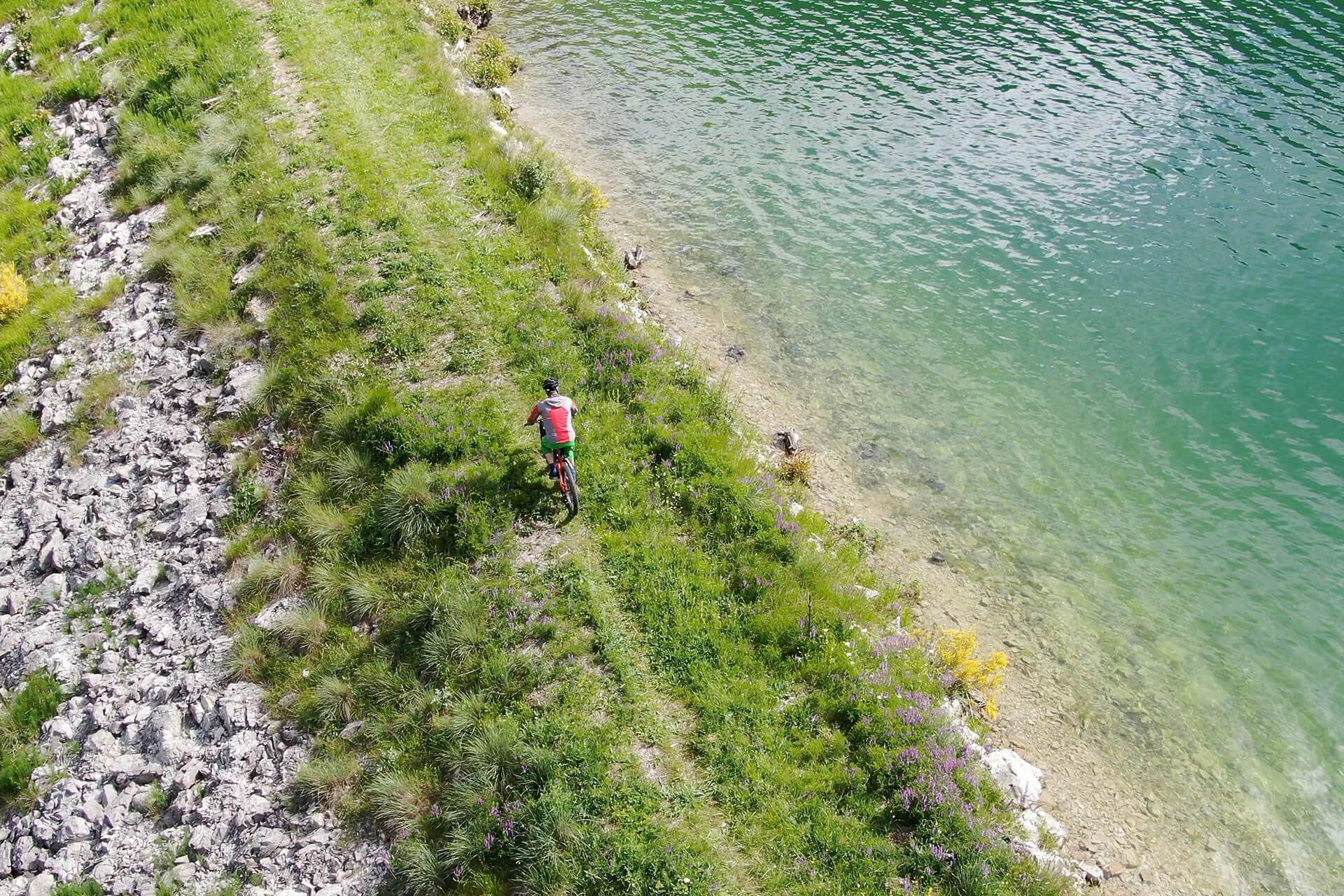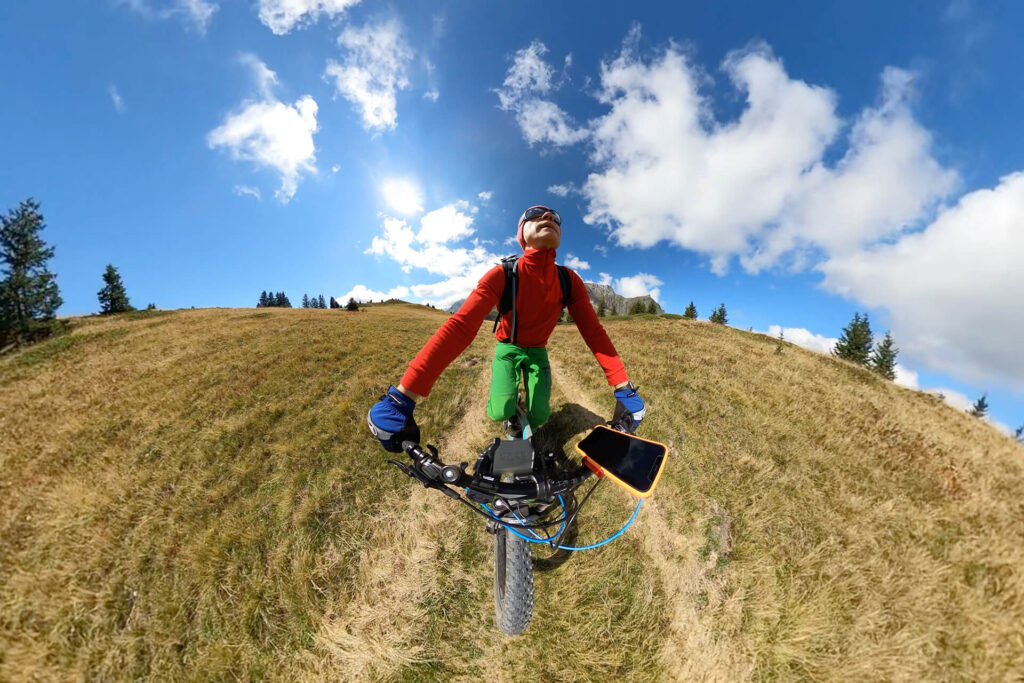One fine afternoon, I recall racing uphill with a group of friends. It was a steep climb and half of us were already huffing and puffing. Then, I switched on the electric assist on my e-bike, and it was like having an invisible hand push me forward. The ease with which I completed that uphill […]
How to Choose An Electric Mountain Bike for Hire

One fine afternoon, I recall racing uphill with a group of friends. It was a steep climb and half of us were already huffing and puffing. Then, I switched on the electric assist on my e-bike, and it was like having an invisible hand push me forward. The ease with which I completed that uphill journey while others struggled, turned me into a believer of the prowess of electric mountain bikes.
Drawing from my experience, I have found that electric mountain bikes are more than just a fantastic choice for adventure seekers and leisure cyclists. They are a combination of excitement and convenience, power and affordability. They offer the unique advantage of enhancing cycling performance without compromising on the pure joy of pedaling.
Key Features to Look out for When Hiring an Electric Mountain Bike
Choosing to hire the ideal electric mountain bike involves more than just aesthetics and price tags. It’s about identifying certain key features that can significantly enhance your biking experience.
Consideration of Terrain
The trial runs I did on various bikes were eye-opening. Not only did I realize that the type of terrain you’ll be riding on significantly impacts the kind of bike you should hire, but I also learned that the wrong bike on the wrong terrain could potentially make your biking experience miserable.
Take sandy trails for instance. You’re likely to struggle with a regular mountain bike as the wheels sink into the sand, making it a struggle to pedal. But an electric mountain bike, with its extra power, can help you conquer such challenging terrains with relative ease.
Endurance and Distance
One remarkable discovery that our team made was the sheer significance of endurance and distance in choosing an e-bike. Especially if you’re planning long-distance treks, an e-bike with a long battery life and superior comfort is not a luxury, it’s a necessity.
Imagine this: You are halfway through a beautiful trail, with the sun setting and painting the sky in hues of orange and pink. The last thing you’d want is your e-bike battery giving up on you, leaving you stranded in the middle of nowhere. Or picture an all-day ride on a poorly designed saddle. The discomfort can turn a potentially breathtaking journey into an ordeal you can’t wait to end.
That’s why, when it comes to e-bikes, it’s crucial to factor in endurance and comfort. After all, the beauty of biking is in the journey, not just the destination.
Deciphering Battery Capacity
Following an extensive investigation, I’ve discovered that the battery capacity is a linchpin for longer rides. To illustrate this, let’s consider a hypothetical situation: You are halfway through an exciting 40-kilometre trail when suddenly, your bike comes to a halt – the battery is exhausted. Now, you’re stuck in the middle of nowhere with kilometres to go. To avoid such a scenario, a bike with a larger battery capacity is crucial.
Did you know that some e-bikes boast a battery range of up to 95 kilometres on a single charge? That’s like traveling the entire length of Manhattan, back and forth, without needing to recharge!
Power and Speed Limits
For those craving a thrill, bikes with higher power limits are the ideal choice. Think of it like this: an e-bike’s power is similar to the horsepower in a car. A higher power limit can offer an exhilarating ride, allowing you to conquer steep slopes and traverse challenging trails with relative ease, much like a 4×4 vehicle tackling off-road terrains.
Frame Material Considerations
Practical knowledge indicates that the bike frame material greatly impacts both the bike’s weight and durability. For instance, frames made from carbon fiber or high-quality aluminum are not only incredibly lightweight but also exceptionally sturdy.
To put it into perspective, imagine wearing a suit of armor versus a lightweight windbreaker while trying to run a race; the lighter, durable material always makes the journey easier and more enjoyable.
Suspension Types
The results of numerous tests have shown that the right suspension can dramatically uplift your riding experience. For example, full suspension bikes, which offer shock absorption both at the front and rear, are like the all-terrain SUVs of the biking world. They can effortlessly glide over the most challenging terrains, ensuring a smooth, comfortable ride regardless of the ground underneath.
To sum up, when choosing an electric mountain bike, it’s essential to keep these key features in mind. By doing so, you’ll ensure that you get a bike that’s not only fun to ride but also perfectly suited to your specific needs.

Fit and Comfort
An electric mountain bike might come with all the bells and whistles, but if it doesn’t offer a comfortable fit, it’s like having a sports car with uncomfortable seats. Two vital components play into this comfort level – the bike size and the saddle.
Bike Size
Just like a tailored suit fits better than a one-size-fits-all, choosing the right bike size is pivotal for both a comfortable and safer ride.
Think of it like this: you’re Cinderella at the ball, and the bike is the glass slipper. If the bike is too big, it’ll be hard to control, and you’ll be stretching to reach the handlebars or touch the ground, leading to discomfort and potential safety hazards. On the other hand, a bike that’s too small would make you feel cramped, can reduce your pedaling efficiency and throw off your balance.
Just to give you a sense of scale, did you know that even a few centimeters can make a difference in bike sizing? That’s why many manufacturers provide detailed sizing charts, enabling riders to find their perfect fit.
Saddle Considerations
The saddle is where the cyclist meets the bike. Thus, its importance can’t be overstated. After putting several saddles to the test, I can confidently say that the right saddle is like a comfortable chair that allows you to work for hours without tiring.
For instance, a well-padded, wide saddle can provide more support for a leisurely ride, while narrow, streamlined saddles are more suited for sporty rides where speed and maneuverability are of the essence.
Moreover, saddle features like gel padding or cut-outs can significantly enhance comfort, especially during longer rides. It’s fascinating to note that there’s even a science behind the design of bike saddles, with manufacturers studying anatomy and pressure points to create saddles that can provide maximum comfort while minimizing discomfort or health issues.
In conclusion, when choosing an electric mountain bike for hire, always pay close attention to the bike’s size and the saddle. Doing so will not only make your ride safer but also more enjoyable, allowing you to fully appreciate the thrill of the ride.
Price and Hire Options
The financial aspect is undeniably a significant factor when hiring an electric mountain bike. It’s a delicate balance between the duration of your hire and the associated costs, not forgetting the potential liabilities.
Daily, Weekly, and Monthly Hire Rates
Plan your hire period can dramatically affect your overall expense. It’s akin to booking a hotel room: staying for one night might seem expensive, but the per-night price often drops if you’re planning an extended stay.
Similarly, daily hire rates for electric mountain bikes can be higher compared to weekly or monthly rates, which are typically discounted to encourage longer rentals. To paint a clearer picture, hiring a bike daily for a week might cost you more than opting for a straight-up weekly hire rate. If you’re considering a long-term engagement, monthly rates could be even more economical. Therefore, aligning your hire period to the most suitable rate option can lead to significant savings.
Insurance and Liability Considerations
If there’s one thing my findings unequivocally illustrate, it’s that understanding your hire agreement, especially regarding insurance and liabilities, is fundamental. It’s akin to renting a car; you need to be fully aware of what happens in case of accidents or damages.
Does your hire agreement cover repairs or replacements if the bike is damaged? Or are you liable for these costs? What happens in case of theft? These are crucial questions that your hire agreement should answer. For instance, some bike hire services offer optional insurance packages that cover damage or theft, providing peace of mind during your ride.
An interesting fact is that some personal insurance policies or credit cards offer rental coverage that could apply to bike hire as well. It might be worthwhile checking if you already have such a cover before opting for additional insurance.
It is therefore very important to know that that prudent consideration of hire rates and understanding your liability in case of mishaps can ensure a worry-free and cost-optimized experience when hiring an electric mountain bike.
How to Choose An Electric Mountain Bike for Hire – Conclusion
Selecting the right electric mountain bike for hire is a task that requires careful deliberation and a comprehensive understanding of various factors.
In essence, when choosing an electric mountain bike for hire, it’s all about discovering the perfect blend that satisfies your specific requirements and fits within your budget. Like assembling a jigsaw puzzle, each piece – or in this case, each factor – plays an essential role in creating the perfect picture of your ideal e-biking experience.
Choosing an Electric Mountain Bike for Hire – FAQ
- What’s the average battery life of an electric mountain bike?
The average battery life of an electric mountain bike can vary depending on the bike model and battery capacity. However, a full charge typically lasts for about 20 to 50 miles of riding. Remember, using the electric assist feature continuously will drain the battery faster.
- How do I know if the bike frame is the right size for me?
The best way to determine if the bike frame is the right size for you is through a fitting test. When you stand over the bike, there should be a 1 to 3-inch gap between you and the top tube. Also, while sitting on the saddle with your foot at the bottom pedal stroke, your knee should be slightly bent.
- What kind of suspension should I look for if I’m riding on rough terrains?
If you plan on riding on rough terrains, consider electric mountain bikes with full suspension. They provide shock absorption both at the front and rear, providing better control and comfort over rocks, roots, and other bumpy surfaces.
- What does the bike hire agreement usually cover?
A bike hire agreement typically covers the rental rate, rental period, and responsibilities of the hirer. This often includes liabilities in case of damage or theft, so it’s crucial to read and understand the agreement before hiring.
- Is it better to hire an electric bike for a longer period?
The decision to hire an electric bike for a longer period depends on your needs. If you plan on using the bike regularly over a prolonged period, long-term hire might be more economical. However, for one-off or infrequent use, a short-term hire may be more suitable. Always compare the pricing options to make the best decision.